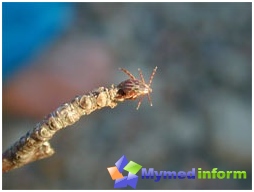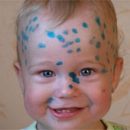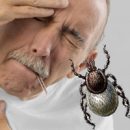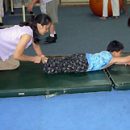This pathology is manifested by the lack of pigmentation at certain areas of the skin. Experts note that children suffer from this ailicular less than adults. It is also worth noting that according to statistics, the girls are much more often susceptible to vitiligo than boys.
Previously, Vitiligo was considered an incurable disease, but modern medicine claims that there is nothing impossible. MyMedinform.COM will tell more about this ailment and, that is important, will advise how much you still cure vitiligo.
What is vitiligo?
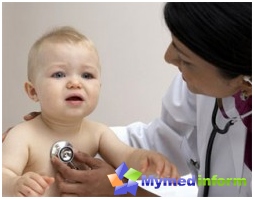
Vitiligo is a fairly frequent hereditary pathology, which manifests the loss in certain areas of the skin ability to produce pigment. This is due to the fact that in melanocytes there is no such enzyme as tyrosinease - it is he who catalyzes the process of pigment formation. But from the point of view of science, at the genetic level, vitiligo consolidates various changes in the state of the nervous system, as well as in metabolic processes and plumendural dysfunction.
In the area of Vitiligo, there is a weakening of vessels and muscular-haired reflexes, a lot of waste and sweating is much less manifest. Experts claim that the body concentrates more than the number of autoantibol and characteristic is the violation of copper exchange.
Doctors often do not even consider vitiligo for the disease, since there are no visible threats to human life. Although in fact it is not so, because this ailment is still harmful to health - this is not only not quite a pleasant cosmetic defect, but also a clear reminder that there are global violations in the body.
Features of vitiligo in children
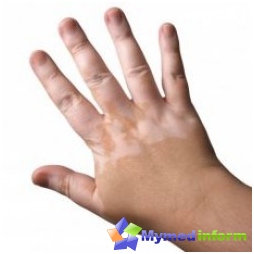
This disease is chronic - it is mainly difficult to move morally, since the patient is discomfort, depressed, tries to close in itself. The beginning of the disease is the appearance on the skin of pale pink or white spots (depending on how the skin shade) of a small size, which gradually increase and acquire different values. They can be round and oval, narrow and wide - their form is wrong, they can be either solid or multiple. Often, stains grow up and merge into one big hearth.
Vitiligo may occur anywhere, but mostly vitiligo appears in open areas of the body: face, neck, hands, legs, folds in groin. Spots of vitiligo forming the hearth are symmetrically located, but in rare cases, the defeat is one-sided, but in the course of nervous trunks.
If vitiligo affects the hair part of the body, then in these places the hair also change the color - they pale.
Since in places where vitiligo spots arose, there is a complete violation, it does not have a sweating and a salo-waste, there is no vessel and muscular-haired reflex. Because of this, the skin does not respond to stimuli, capable of forming the so-called «Hisic skin».
Very often, during vitiligo, solar dermatitis manifests. In general, the patient is contraindicated for a long time in the sun - from hot rays of the spots stand out even more.
Often, vitiligo migrates: some spots appear and disappear in one, then elsewhere.
In a person who is sick of vitiligo, there are no subjective sensations - it does not bother him: there is no pain, itching, discomfort. Vitiligo brings inconvenience as the usual cosmetic skin defect.
The most severe degree of vitiligo damage is when all skin becomes depigmented. If vitiligo progresses, the foci may occur at the injury, pressure or even friction.
The cause of vitiligo
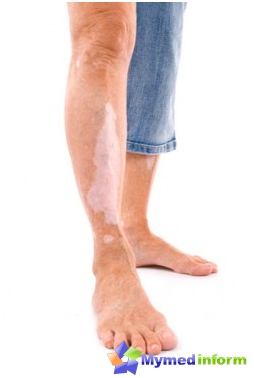
Currently, the reasons, as well as the mechanism of action, the development of vitiligo is not defined and not studied. Scientists suggest that the following factors have for the occurrence and development of this disease:
- Problems associated with the endocrine system (violation of the function of the thyroid gland, pituitary gland, germ, adrenal glands).
- Mental injury.
- Stressful states.
- Problems of the vegetative nervous system.
- The processes of autoimmune content.
- Heredity.
- Heavy infectious diseases.
- Chronic Diseases of Internal Organs.
- Physical injury.
- Allergy to synthetic fabrics due to frequent contact with the stimulus.
- Inxication.
- Violation of the balance of vitamins or exchange of minerals and useful substances (copper, zinc, iron).
- Violations in the work of the immune system.
- The presence of internal parasites.
Treatment of vitiligo in children
Still believes that vitiligo is not treated, but, thanks to the latest technologies, you can risk and try to get rid of this ailment. Today, the patient prescribe various substances that are able to improve the exchange processes in the skin - they affect how the exchange of pigment melanin occurs.
If you discovered white spots on the skin, you need to immediately contact the hospital to the dermatologist. The specialist must first determine how the reason for the appearance of vitiligo in a child. To do this, you may need to pass a number of analyzes to identify - is there any pathology of internal organs.
Mostly doctors prescribe photosensitizers and ultraviolet irradiation. Also useful for a massage course with nitrogen. Vitamins are necessarily necessary, which contribute to improving metabolism and supporting immunostimulants.
An important episode of treatment is cream and ointment - they are applied daily to the foci.
Folk treatments
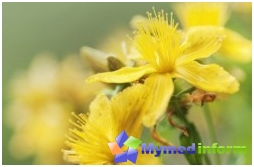
Unfortunately, many modern methods and methods of treating vitiligo are categorically contraindicated to children who have not reached five, seven or twelve years. In this case, you can try to refer to traditional medicine.
Recipe number 1.
St. John's wort - a spoon of dry grass - pour a glass of boiling water. So thirty minutes. Drink three times a day on a tablespoon.
Recipe number 2.
Seeds of milk thistle, alfalfa, mustard, buckwheat grind into powder. Take two tablespoons of the mixture, pour 500 ml of water. Boil on low heat until the liquid decreases by 2 times. Decoction to strain, give the kid 6 times a day on one spoon.
Recipe number 3.
Spoon of dried and crushed Hypericum pour 10 st. L. Oils (ideally - olive). Heated thirty minutes in a water bath. The resulting mixture is missing through gauze. Impose ointment on the foci twice a day.
Pay attention to the nutrition of the baby. Be sure to enter buckwheat, carrots, persimmon, tomatoes, pepper in the daily menu. All these products contribute to the fact that melatonin is produced.





